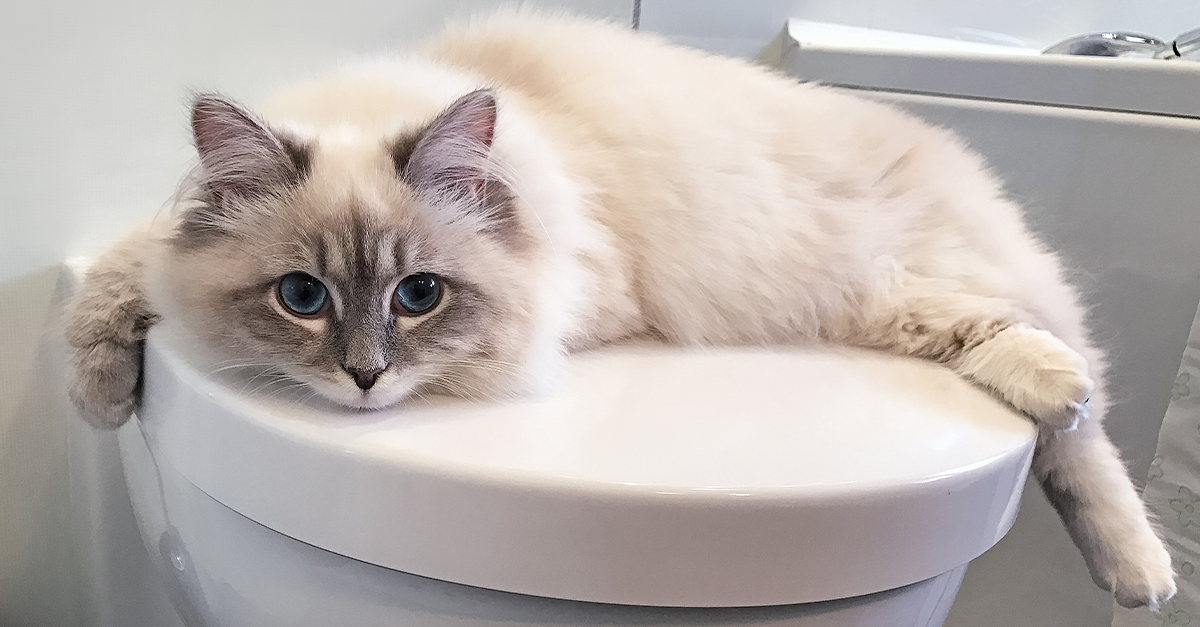Why Flushing Cat Poop Down Your Toilet Can Cause Problems - Tips for Safe Disposal
Call TodayListed here below you can find a lot of first-rate guidance around Don’t flush cat feces down the toilet.

Intro
As cat proprietors, it's important to bear in mind just how we dispose of our feline buddies' waste. While it may seem practical to flush cat poop down the toilet, this practice can have harmful consequences for both the environment and human health.
Ecological Impact
Purging feline poop introduces damaging pathogens and bloodsuckers right into the water supply, presenting a significant danger to marine ecosystems. These pollutants can adversely influence marine life and compromise water high quality.
Health and wellness Risks
Along with ecological concerns, flushing cat waste can additionally posture health threats to human beings. Pet cat feces might have Toxoplasma gondii, a bloodsucker that can trigger toxoplasmosis-- a potentially serious disease, especially for expecting ladies and people with damaged body immune systems.
Alternatives to Flushing
Luckily, there are much safer and extra liable ways to dispose of pet cat poop. Take into consideration the complying with alternatives:
1. Scoop and Dispose in Trash
One of the most typical method of disposing of pet cat poop is to scoop it into a biodegradable bag and toss it in the trash. Make sure to use a committed litter inside story and deal with the waste without delay.
2. Use Biodegradable Litter
Go with biodegradable pet cat litter made from materials such as corn or wheat. These clutters are environmentally friendly and can be safely taken care of in the trash.
3. Bury in the Yard
If you have a backyard, take into consideration burying feline waste in an assigned location far from vegetable gardens and water sources. Make sure to dig deep adequate to stop contamination of groundwater.
4. Mount a Pet Waste Disposal System
Invest in a pet waste disposal system specifically developed for feline waste. These systems utilize enzymes to break down the waste, decreasing odor and environmental impact.
Conclusion
Responsible pet dog ownership extends beyond offering food and shelter-- it also entails proper waste management. By avoiding flushing pet cat poop down the toilet and selecting alternative disposal approaches, we can minimize our environmental footprint and shield human health.
Why Can’t I Flush Cat Poop?
It Spreads a Parasite
Cats are frequently infected with a parasite called toxoplasma gondii. The parasite causes an infection called toxoplasmosis. It is usually harmless to cats. The parasite only uses cat poop as a host for its eggs. Otherwise, the cat’s immune system usually keeps the infection at low enough levels to maintain its own health. But it does not stop the develop of eggs. These eggs are tiny and surprisingly tough. They may survive for a year before they begin to grow. But that’s the problem.
Our wastewater system is not designed to deal with toxoplasmosis eggs. Instead, most eggs will flush from your toilet into sewers and wastewater management plants. After the sewage is treated for many other harmful things in it, it is typically released into local rivers, lakes, or oceans. Here, the toxoplasmosis eggs can find new hosts, including starfish, crabs, otters, and many other wildlife. For many, this is a significant risk to their health. Toxoplasmosis can also end up infecting water sources that are important for agriculture, which means our deer, pigs, and sheep can get infected too.
Is There Risk to Humans?
There can be a risk to human life from flushing cat poop down the toilet. If you do so, the parasites from your cat’s poop can end up in shellfish, game animals, or livestock. If this meat is then served raw or undercooked, the people who eat it can get sick.
In fact, according to the CDC, 40 million people in the United States are infected with toxoplasma gondii. They get it from exposure to infected seafood, or from some kind of cat poop contamination, like drinking from a stream that is contaminated or touching anything that has come into contact with cat poop. That includes just cleaning a cat litter box.
Most people who get infected with these parasites will not develop any symptoms. However, for pregnant women or for those with compromised immune systems, the parasite can cause severe health problems.
How to Handle Cat Poop
The best way to handle cat poop is actually to clean the box more often. The eggs that the parasite sheds will not become active until one to five days after the cat poops. That means that if you clean daily, you’re much less likely to come into direct contact with infectious eggs.
That said, always dispose of cat poop in the garbage and not down the toilet. Wash your hands before and after you clean the litter box, and bring the bag of poop right outside to your garbage bins.
https://trenchlesssolutionsusa.com/why-cant-i-flush-cat-poop/

Do you appreciate more info about Can You Flush Cat Poop Down The Toilet?? Write a comment down the page. We would be glad to find out your ideas about this entry. We hope to see you back again in the future. Sharing is nice. You never know, you might be doing someone a favor. Thanks so much for your time invested reading it.
Visit Homepage